Msheireb Museums is a group of four historical houses situated in downtown Doha. These houses are Mohammed Bin Jassim House, Company House, Radwani House, and Bin Jelmood House. Every house has been meticulously restored and highlights visitors with various aspects of Qatari life, such as pearl diving, oil exploration, slavery, and traditional architecture. Msheireb Museums are a real gateway to the country’s rich cultural heritage and offer insights into its past.
Table of Contents
Msheireb Museums: What to See
The Msheireb Museums are a fascinating collection of four heritage houses in Qatar. Each house offers a different perspective on the country’s rich history and heritage. As you explore the exhibits, you’ll discover Qatar’s early history, the development of its oil and gas industry, its traditional architecture, and its role in the modern world.
PLAN YOUR TRIP TO QATAR
During your trip to Qatar make sure you stay connected by purchasing Airalo eSIM online in advance, and avoid the hassle of buying a physical SIM at the airport.
In addition, remember to purchase Heymondo travel insurance that provides coverage against unexpected events such as medical emergencies, trip cancellations, lost luggage, and more. It offers great value for money and ensures a stress-free and enjoyable trip!
When I first heard about the Msheireb Museums, I was particularly interested in visiting the Company House museum. However, as I went through the various exhibits, I was pleasantly surprised to find that I loved them all. Each museum taught me so much about the Qatari lifestyle and traditions.
Of all the museums, the Bin Jelmood House was perhaps the most unique and eye-opening. Focused on the history of slavery in the Arabian peninsula, it offers a very different perspective from what I had learned in European schools. Overall, the Msheireb Museums are a must-see for anyone interested in learning more about Qatar’s rich cultural heritage.
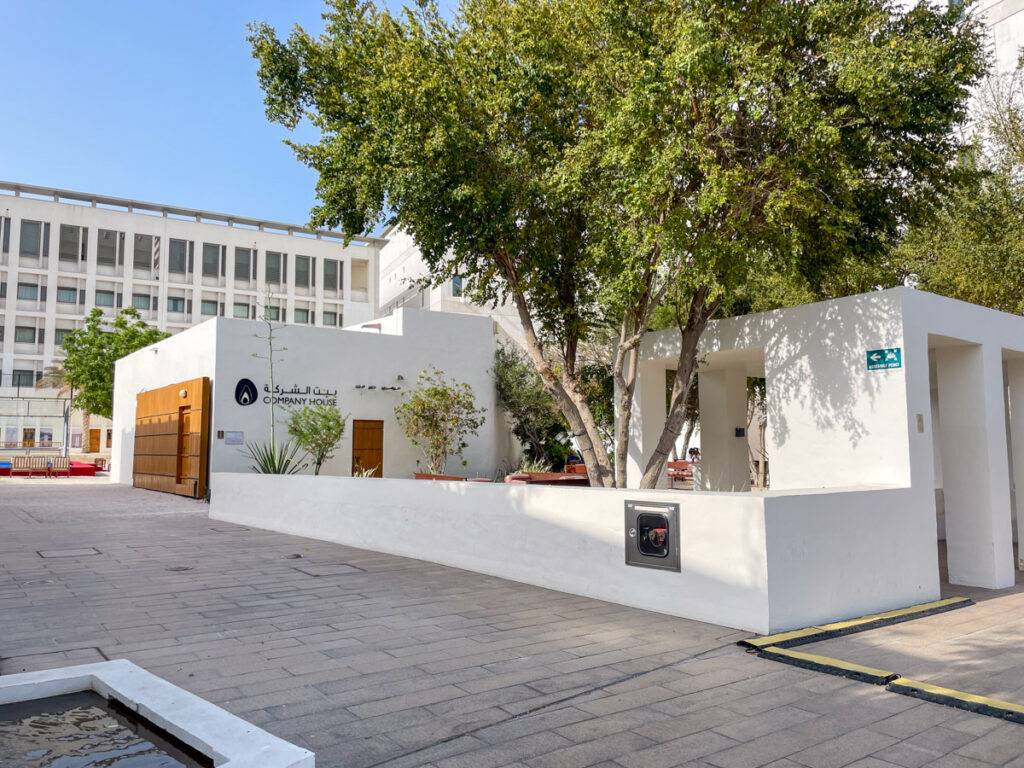
Company House: the History of Oil in Qatar
The Company House museum in Qatar showcases the history of oil pioneers in the country. The story starts in 1926 when the Anglo-Persian Oil Company sent geologist G. M. Lees to search for oil. The company had the exclusive contract to search for and discover oil in the country, and this search changed the future of Qatar.
From the late 1930s onwards, the company employed Qatari men to work in the desert oil fields in the western part of the country. These men worked in harsh conditions for a month at the oil fields, returning home only for a day to see their families and collect a small salary.
The Qatari workers lived in shacks in Al-Khor, while the British managers lived in proper houses. In one video, a former worker complains about the lack of human rights, the long journey to the industrial area, and only having one day off to see family, but generally, there was no resentment among the workers.
From the exhibit, I learned that the British were admired for their patience and their ability to work in tough conditions without complaining about the heat. Similarly, the Qatari workers took pride in contributing to Qatar’s development into an oil-rich nation.
Despite the difficult work conditions, the shift from pearl fishing to oil was an improvement. Pearl fishing faced a significant crisis when the Japanese discovered how to cultivate pearls. Plus, a video explains how dangerous pearl fishing was from the perspective of a Qatari fisherman.
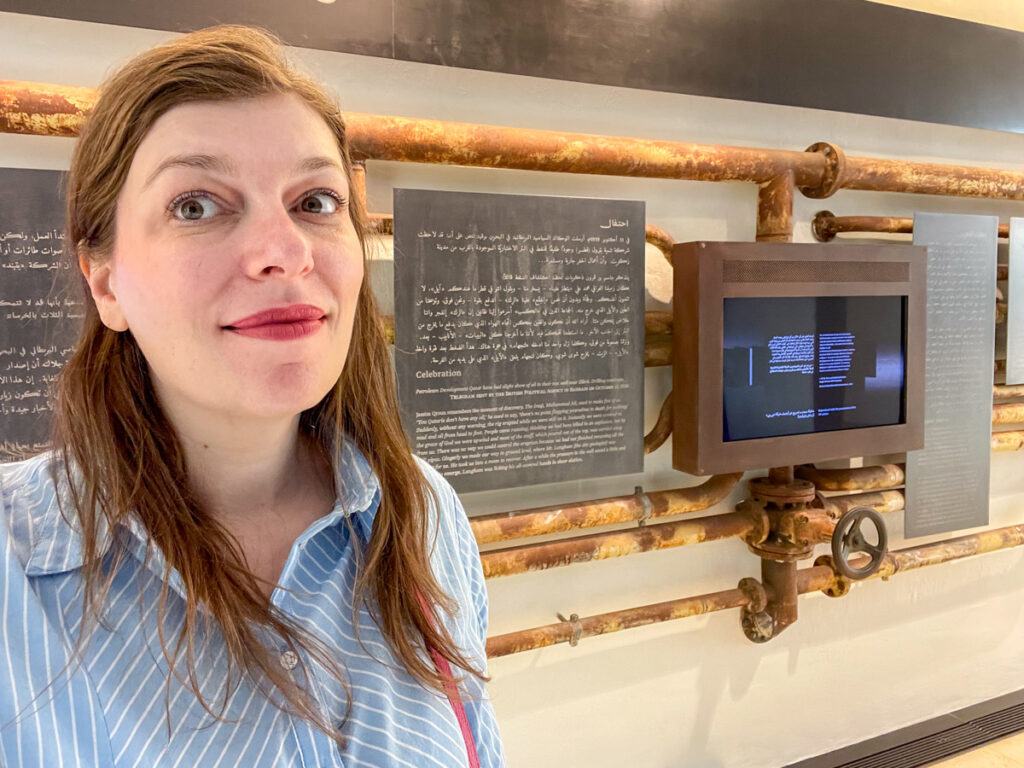
Bin Jelmood House: the History of Slave in the Indian Ocean
In the Bin Jelmood House, named after a slave trader who lived there with his family in the mid-1900s, I discovered the vastly different history of slavery in Qatar and the Indian Ocean region compared to the Atlantic trade.
For centuries, the Gulf region has been part of a vast trade network across the Indian Ocean. Unlike the Atlantic slave trade, enslaved people in the Indian Ocean were not confined to a specific ethnicity. They could be enslaved for a variety of roles, including domestic service, labour, guard duty, concubinage, and entertainment.
People were enslaved through kidnapping, capture during warfare, punishment for crimes, or being tricked into captivity. Some people were forced into slavery to pay off their debts, while others were born into slavery. Some people even gave themselves up voluntarily to avoid starvation.
Enslaved people in this part of the world generally did not realise that they were part of a larger community because they lived in small groups instead of large plantations. In early Islamic Arabia, many enslaved people were considered part of the family, albeit of lower status than free family members. Moreover, certain enslaved individuals rose to prominent positions, such as generals or poets.
The Bin Jelmood House is really interesting. It shows history from a different point of view. However, the museum also reminds us that slavery and exploitation are still a current problem we should not ignore.
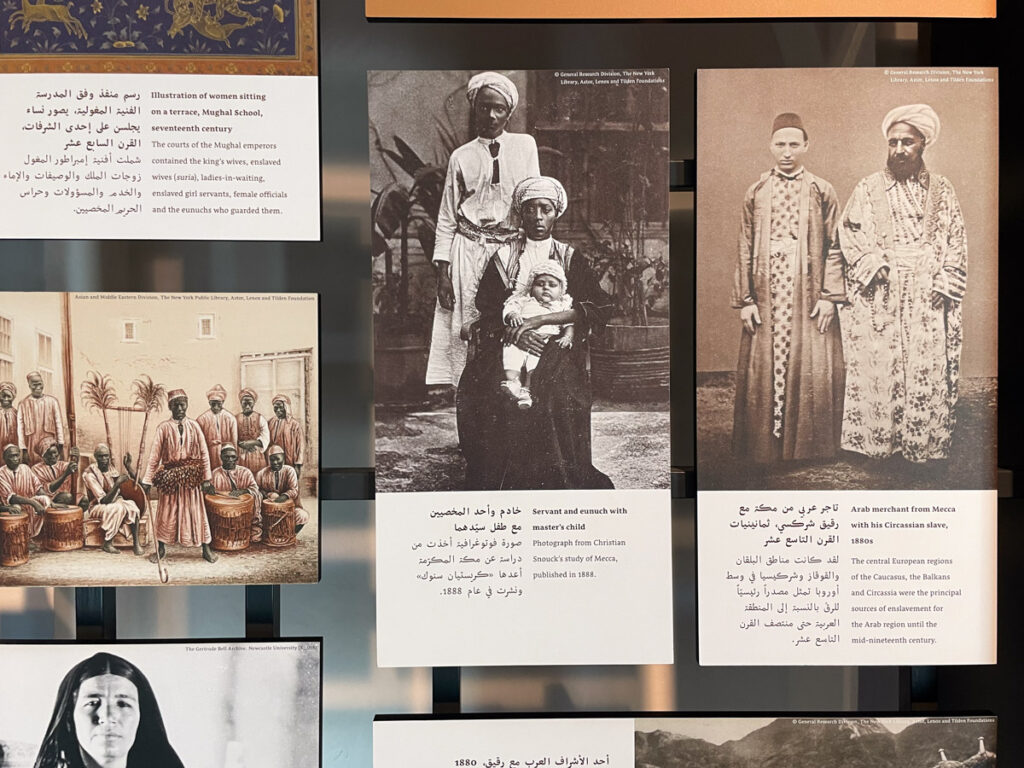
Mohammed Bin Jassim House: the Development of Doha
Mohammed Bin Jassim House museum focuses on the rich history of Doha’s historic heart, Msheireb. Here, you can learn how Doha originated from two neighbouring settlements, Al-Bidda and Doha. Initially, Al-Bidda was the larger of the two, but as Doha started developing, its growing population began to settle in the Msheireb area.
Several factors, such as water availability, proximity to pearl banks, and a harbour for fishing, determined the settlement of Msheireb. In fact, the name Msheireb means ‘place of drinking water’ due to its wells.
Cultural and social factors, like reliance on the sea for living and the principles of Islam, shaped many dimensions of social life and are evident in architecture. Msheireb was a dense mix of public and private spaces, souqs, mosques, and clusters of packed houses (thfereej) developed among each other with narrow passageways (sikak) between buildings and open spaces (barahat). Forts and palaces were also in the town.
Today, Msheireb Downtown Doha, like many other districts in the city, is focused on sustainable architecture. Key features of the design include the use of local materials, maximisation of ventilation, and minimisation of the sun’s effects. Additionally, recycled water is used for irrigation, which helps reduce the city’s environmental impact.
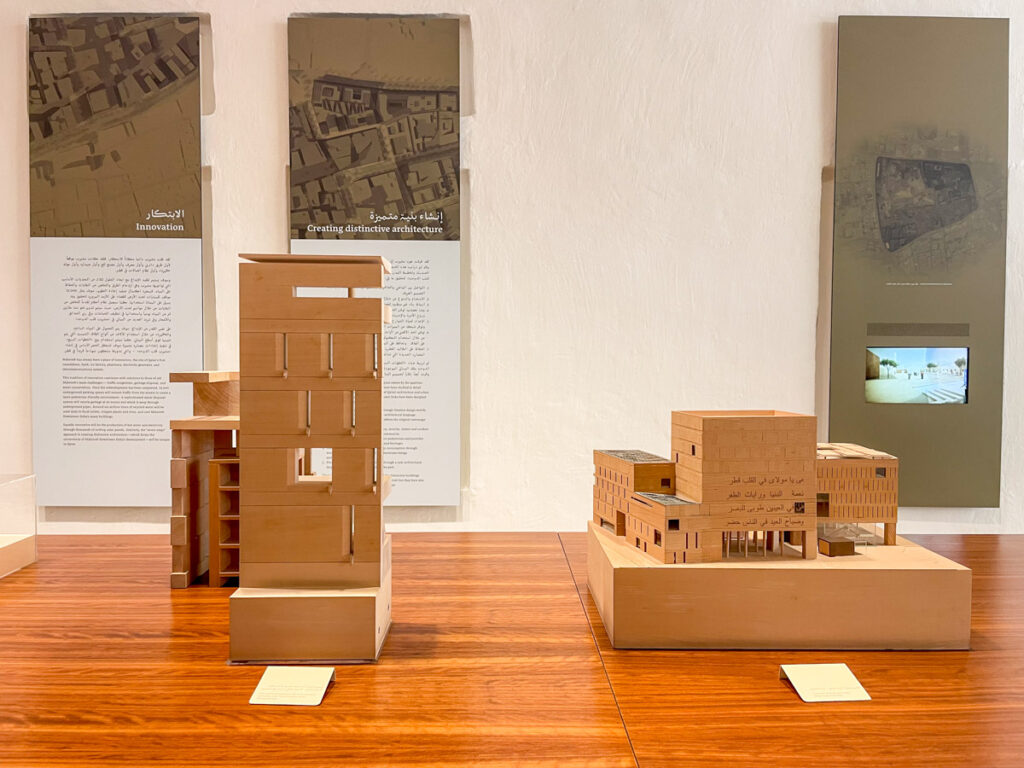
Radwani House: a Traditional Courtyard House
The Radwani House is a typical courtyard house that was built in the 1920s and underwent several renovations and expansions over time. Today, it is one of the most significant historical buildings in Doha. It offers a glimpse into the traditional Qatari lifestyle of the last century.
When the Radwani family moved away from the house in 1971, it stood abandoned and derelict. However, the restoration used traditional building methods and materials, and today, the house is a museum that displays Qatari culture and tradition.
One of the fascinating things I discovered during my visit to the Radwani House was the Qatari and Arab emphasis on privacy. You’ll notice that the external facade of the house has no windows, except for the majlis, the public space where guests are received. The courtyard, the centre of domestic life, cannot be seen from the majlis. Furthermore, the roof, used for sleeping during hot months, is screened by a tall parapet.
Another typical architectural feature that I found interesting was the arrangement of rooms around the courtyard. While some rooms had specific functions, like the kitchen or storage space, most were multifunctional and served various purposes.
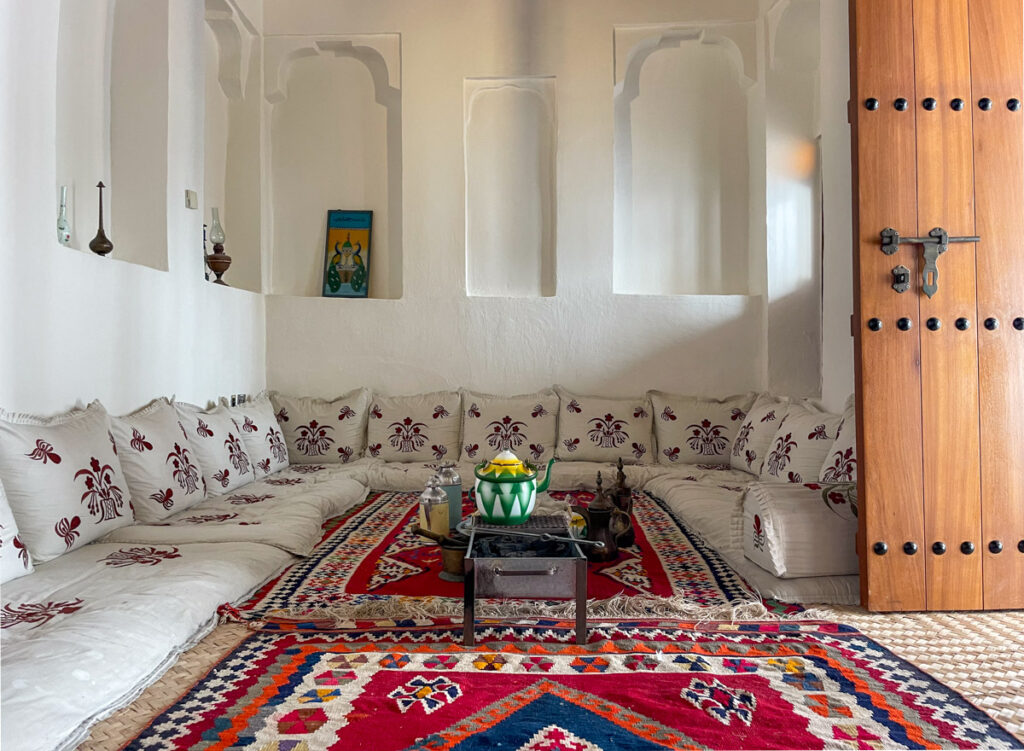
Useful information for visiting the Msheireb Museums
All the houses part of Msheireb Museums have free admission for all visitors. There is just a simple registration process where you are required to write down your name and country.
There is no need to book your visit in advance unless you require a guided tour or would like to arrange for a group visit. In that case you should contact Msheireb Museums through the reservation on their website at least 3 days in advance.
Msheireb Museums requires visitors to dress conservatively, covering their shoulders and knees as a sign of respect for Qatari culture. I adhered to the dress code by wearing a shirt and long trousers.
Msheireb Museums
Downtown Doha
7GPH+VQ8, Doha
Where to stay in Doha
Doha boasts a wide range of beautiful hotels with swimming pools and fitness centers to choose from. DoubleTree by Hilton Doha Old Town is a great modern accommodation in the heart of Doha. For a sea view option, you can choose the Wyndham Grand Doha West Bay Beach. If you prefer to stay in a hotel with an Arabian touch, I can recommend La Maison Hotel Doha, or for a luxurious experience, the incredible Sharq Village & Spa, a Ritz-Carlton Hotel.
Overall, Msheireb Museums is a must-visit destination for anyone interested in Qatar’s history and culture. In these fascinating houses, you can learn everything from traditional Qatari architecture to culture and customs. Feel free to share in the comments if you would like to visit Msheireb Museums.
